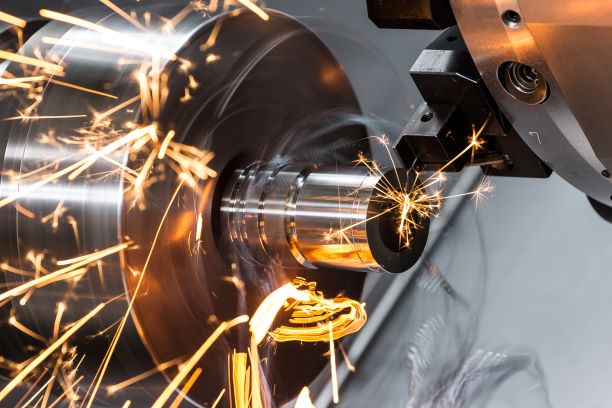Mastering processes: Hard machining
Shorter machining times, high surface quality and the saving of grinding operations. These are just three of the advantages that hard machining with a geometrically defined cutting edge can bring to the user. With a high level of know-how in tool technology, Paul Horn GmbH offers numerous tool solutions to economically machine steels harder than 56 HRC. The cutting material CBN has proven itself suitable for grooving operations.
CBN (cubic boron nitride) is the second hardest known material on earth after diamond. Tools made of CBN wear much more slowly than other cutting materials when used appropriately. On one hand, this makes it possible to achieve higher shape and dimensional accuracy, and on the other hand, hard materials (steel up to 70 HRC) can be machined reliably. There are no different grades of CBN. Differentiation is made by the CBN volume fraction, the fillers, the grain size and the ceramic/metallic binder phase (cobalt/nickel). This results in different CBN substrates. Numerous tool systems from Horn can be equipped with the cutting material CBN. In most cases, these are tools specially adapted to the respective application. However, Horn also offers standard tools equipped with this very hard cutting material.
Hard machining with CBN cutting materials is usually done dry. This is possible because the cutting material has high heat resistance and the high temperature within the chip formation zone has a positive effect. An insufficient supply of coolant or interruptions in cutting lead to high, thermally induced stresses in the structure of the insert. This can lead to cracks in the structure and thus possibly destroy the insert. During hard machining, the steel in the shear zone undergoes intense heating and is thus softened. Most of the heat generated in the shear zone is dissipated via the chip and not transmitted into the workpiece. This means that there is no thermal influence on the insert edge in the process. While carbide suffers a massive loss of hardness at around 800 degrees Celsius, the hardness of CBN remains almost unchanged even at up to 1,200 degrees Celsius. Another important aspect is the chemical resistance, especially at the prevailing temperatures.
Numerous advantages
Hard machining with a geometrically defined cutting edge in combination with CBN has numerous advantages over grinding . High metal removal rates are possible with this process, which results in shorter machining times. Conventional machines may be used. This offers the possibility of complete machining of the component. Even complex contours can be easily produced on a lathe. With grinding, on the other hand, the wheels have to be elaborately profiled. The high surface quality that can be achieved with hard turning also saves on further grinding operations.
